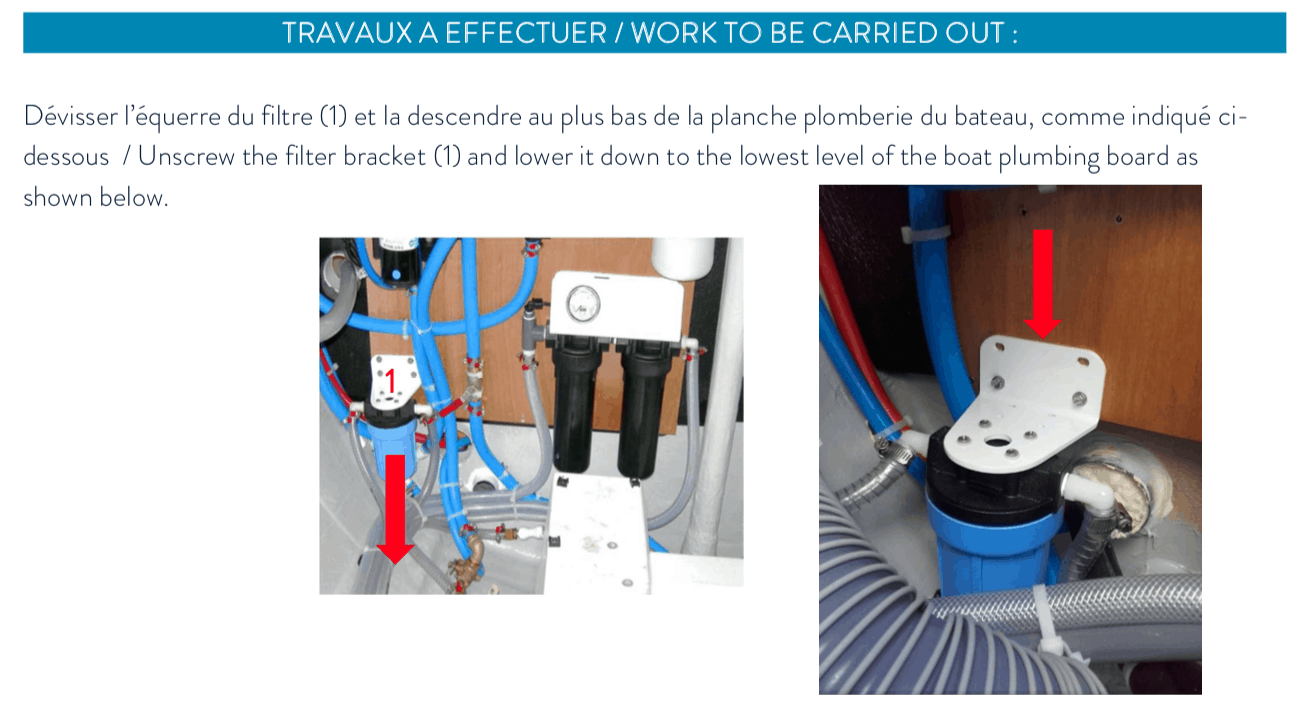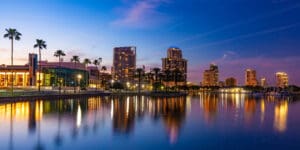Lagoon 42 Catamaran Watermaker repairs
 The Sea Recovery Ultra Whisper watermaker is a low power system, engineered for boaters with limited power options. They are quiet and easy to operate and is a great fit for sailboats. However, the units installed in the Lagoon 42 catamarans, have reportedly had issues from day one and the failure rate is extremely high.
The Sea Recovery Ultra Whisper watermaker is a low power system, engineered for boaters with limited power options. They are quiet and easy to operate and is a great fit for sailboats. However, the units installed in the Lagoon 42 catamarans, have reportedly had issues from day one and the failure rate is extremely high.
PROBLEM: The problem, it seems stems not from the unit itself but from the thru-hull and the strainer/ filter placement (above the waterline) in the boat which causes the system to suck in air. The through-hull is apparently too close to the water surface resulting in air being sucked into the system while operating.This causes the watermaker to lose prime and causes pre-mature failure of RO Boost, Vane Pump and Membrane performance**. According to Parker Hannifen Corp / Sea Recovery: “Current thru-hull location is the contributing factor to air entering system at accelerated rate while at sea.”
Official Temporary Lagoon 42 Watermaker Fix
Lagoon Catamarans issued a technical bulletin for a fix and it seems to be a simple solution. Instructions are:
- Unscrew the strainer / filter bracket.
- Lower it down to the lowest level of boat plumbing as shown in the picture above.
However, as one Lagoon 42 owner reported, the fix was temporary and only delayed failure of the pumps rather than prevent it. He said: “My watermaker worked okay with the Lagoon recommended fix, but it would only slow down the air in the system, not prevent it and it eventually stops working altogether as before.“.
Alternate Temporary Lagoon 42 Watermaker Fix
Sea Recovery technician, Brian Whalen from Hydrologix, worked with one of the Lagoon 42 owners to figure out a solution. The Sea Recovery technicians tried several scenarios and did an exhaustive job to find the best solution.
The best temporary fix they found was:
- Lowering the strainer to the lowest level in the compartment as recommended by Lagoon (shown in the picture above).
- Add a 4 GPH pump to the system at the through-hull in order to deliver water under pressure to the system.
Adding the pump to the official solution results in the water was compressed enough to eliminate air in the system.
The Lagoon 42 owner said: “After operating my watermaker for several weeks now, the unit is working perfectly. We have made water daily since the fix and love the way it works. A game changer for us! Sea Recovery have been fantastic. They spent the day genuinely looking to fix the problem. I was impressed with their knowledge and professionalism. They really care about their customers and their company’s reputation”.
If you have a Lagoon 42 and have experienced similar issues with your Sea Recovery watermaker and have figured out a different solution, we would love to hear from you!
Feel free to contact Brian at Hydrologix for advice. This is the contact information for Brian: Brian@hydrologix.net or Tel: 1-757-548-4564. Sea recovery is now part of the Parker Hannifen Corporation.
Preferred Permanent Solution for Lagoon 42 Watermaker
Recommended fix by Parker Hannifen Corp / Sea Recovery:
- Lower sea strainer below water line.
- Move the thru hull location to a deeper location forward of Keel.
- Add booster pump to the thru hull
**Note: Existing damage to Part # 1218301DS, RO Boost or Part # B007380023, Feed Pump Assembly will require factory repair for either Option A or Option B to be effective. **
SEE FULL EXPLANATION BY SEA RECOVERY HERE
5 Fun Facts About Water
- A healthy person might drink up to three gallons of water per day.
- When you first notice thirst, you’ve already lost 1% (or more) of your body’s total supply.
- There is the same amount of water on Earth as there was when the Earth was formed. The water from your faucet could contain molecules that dinosaurs drank.
- Water is composed of two elements, Hydrogen and Oxygen. 2 Hydrogen + 1 Oxygen = H2O.
- Nearly 97% of the world’s water is salty or otherwise undrinkable. Another 2% is locked in ice caps and glaciers. That leaves just 1% for all of humanity’s needs
- Water expands by 9% when it freezes. Frozen water (ice) is lighter than water, which is why ice floats in water.





